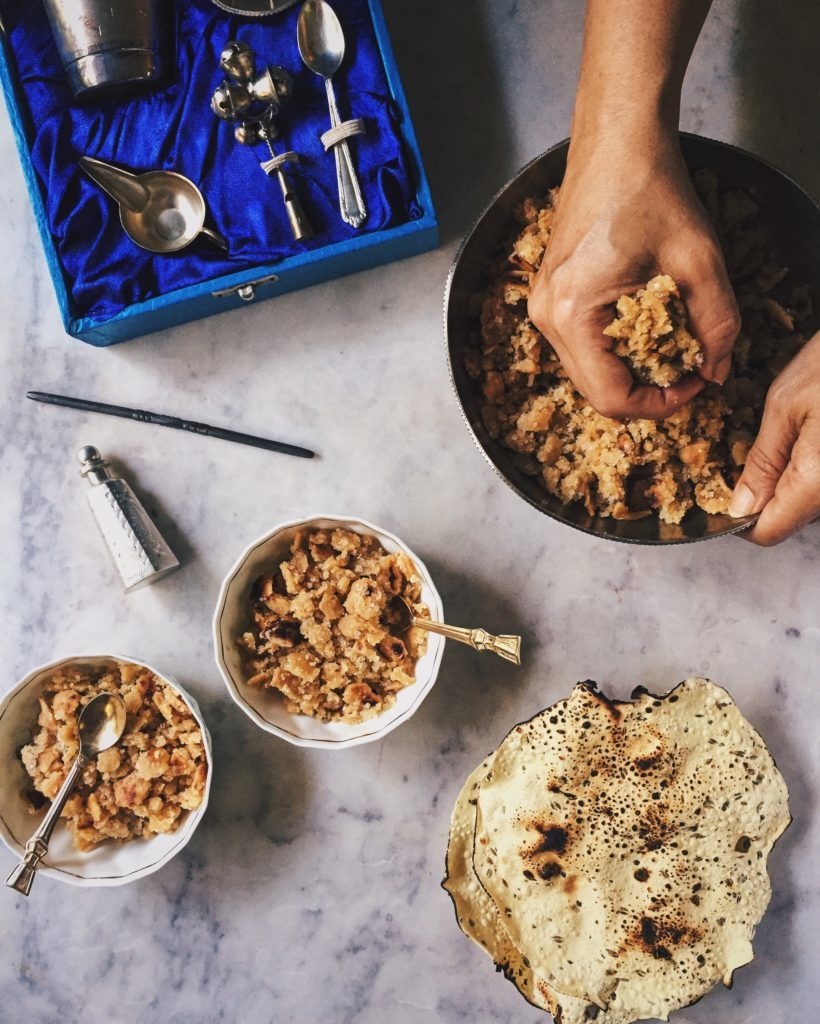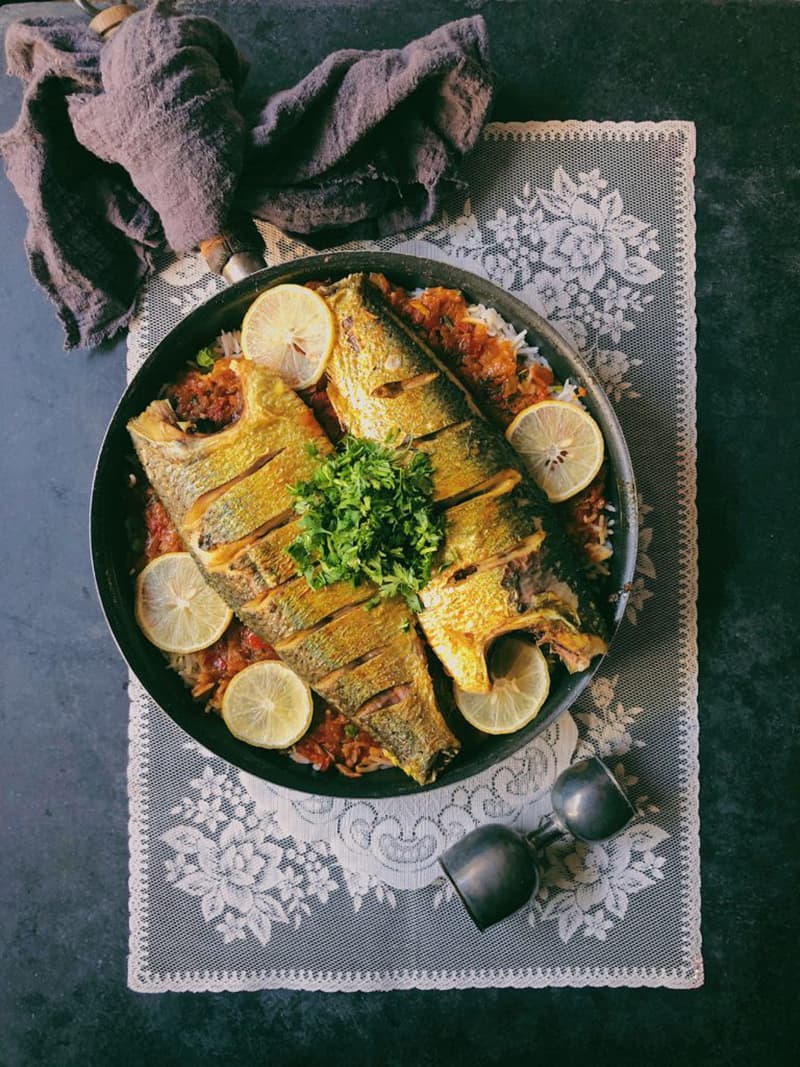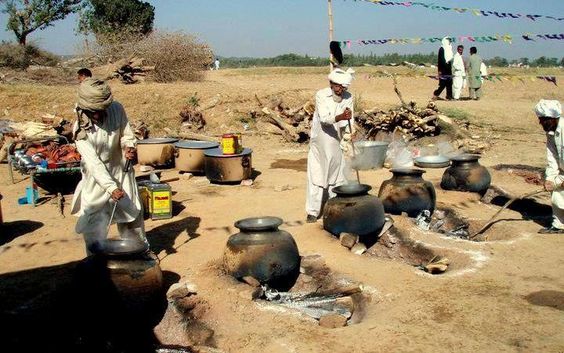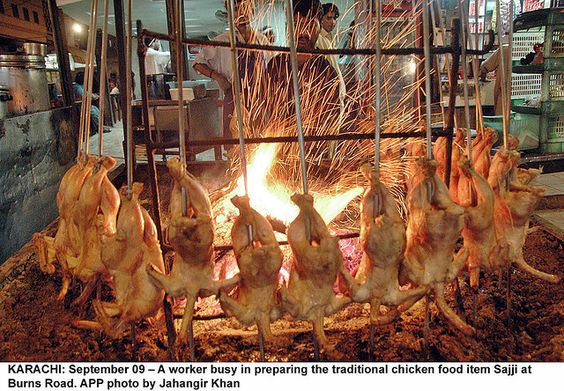How to install the app on iOS
Follow along with the video below to see how to install our site as a web app on your home screen.
Note: This feature may not be available in some browsers.
You are using an out of date browser. It may not display this or other websites correctly.
You should upgrade or use an alternative browser.
You should upgrade or use an alternative browser.
Pakistani Cuisine.
- Thread starter Kinshuk
- Start date
[Bregs]
SENIOR MEMBER

- Joined
- Aug 11, 2013
- Messages
- 6,156
- Reaction score
- 2
- Country
- Location
Lassi is cool in summers time 
ras malai is best

Having ras malai which is as sweet and tasty as you

ras malai is best

ghazi52
PDF THINK TANK: ANALYST

- Joined
- Mar 21, 2007
- Messages
- 104,413
- Reaction score
- 106
- Country
- Location
wow roasted chicken
Sajji from Baluchistan.
Erroroverload
FULL MEMBER

- Joined
- Apr 10, 2015
- Messages
- 666
- Reaction score
- -4
- Country
- Location
Fatima Khan0007
FULL MEMBER
New Recruit
- Joined
- Jan 7, 2019
- Messages
- 40
- Reaction score
- 0
- Country
- Location
khandviyan
ghazi52
PDF THINK TANK: ANALYST

- Joined
- Mar 21, 2007
- Messages
- 104,413
- Reaction score
- 106
- Country
- Location
Sindhi food: A vibrant cuisine hidden from the public
Despite the rich and accessible flavours, it has not found its way to Pakistani or Indian mainstream cuisine.
Maryam Jillani
How do you tell the story of a cuisine that lives and breathes in two countries and refuses to identify itself with either?
I spent the last few weeks speaking to Sindhis in Pakistan, India and overseas about the history of their families and their food. Sindhi cuisine, which features a range of complex flavours through simple, seasonal ingredients, defies simple categorisations.
It is informed by the subcontinent’s rich migrant history, yet firmly rooted in its geography while tying thousands of diaspora Sindhis to a land they might never have visited.
“When my grandparents migrated to Pune from Sukkur, they wanted to make the area’s customs their own. They were Hindus, of course, but our customs weren’t very Hindu. They were closer to Muslims,” Ankiet Gulabani tells me. He runs the popular Mumbai-based food blog, Belly Over Mind, that covers a range of modern and traditional recipes (You can also find on the blog the recipes for the dishes in the photos below).
Pooja Makhijani, a writer based in New Jersey whose grandparents migrated from Karachi and Hyderabad, also found that the food Sindhis grow up eating — bone marrow, liver, kidney — are unfamiliar to many other Hindu north Indians.
While Ankiet’s family was initially conscious about the distinctiveness of their cuisine in Maharashtra, like other Sindhi families who migrated during Partition, they did not give up their Sindh culinary traditions. In fact, Sindhis both in India and overseas predominantly cook Sindhi food at home.
“People who are displaced, in whatever way, cling to their customs, language and traditions. (Hindu) Sindhis have not changed. They have exactly the same food habits regardless of where they are,” Pooja tells me.

Sindhi khatti daal.—Belly Over Mind
While Sindhi food, influenced by Central Asian culinary traditions, certainly has strains of Mughal cuisine, it is distinctive enough that even in Pakistan, Sindhis find that the food they have at home is not necessarily what their friends eat.
Speaking to an old college friend, Shahwar, who grew up in Karachi but whose family is from Larkana, she said she did not realise that her friends did not necessarily grow up eating bhindi aloo with roti or bori kutti for breakfast or busri, which is a sweet roti.
Despite the rich and accessible flavours of Sindhi food, it has not found its way to Pakistani or Indian mainstream cuisine. While you can find Sindhi food in smaller highway restaurants in the province in Pakistan, it is difficult to find dedicated Sindhi restaurants that serve the full range of Sindhi classics in major cities.
Sumayya Usmani, Glasgow-based food writer and author of Under the Tamarind Tree, finds that the enjoyment of Sindhi food has remained regional. She hypothesises it could be because Sindhi food is less meat heavy and spice laden, or that Sindhi recipe sharing is mostly within families. To this point, Ankiet laughs that Sindhis like their home-cooked food so much that they likely will not seek out Sindhi food at restaurants.

Sindhi carrot bhaji.—Belly Over Mind
We may be turning a corner. There is a promising trend of new restaurants dedicated to Sindhi food — such as Café Sindh in Karachi or Sindhful in Mumbai — and of young Sindhis excited to share traditional recipes with the broader public.
Sapna Ajwani, a London-based chef, quit her job in banking four years ago to start a supper club focused on Sindhi food. Sapna’s family are Amil Hindus originally from Hyderabad, Pakistan. She learned to prepare Sindhi food by watching her mother, aunts and grandmothers cook at home.
Sapna’s supper clubs feature a range of Sindhi dishes that are rooted in her family’s Rajput history: bhee chaat, which is steamed lotus stem in chutney or kairkumatsangri, desert beans and berries cooked in mustard oil.
She would often serve Sindhi food to her friends who encouraged her to start a Sindh-focused supper club since the flavours were so distinct from the Indian and Pakistani food they normally found at restaurants.

Kutti.—Belly Over Mind
Sindhi cuisine draws upon a stunning variety of greens in their food. The Sindhi staple, sai bhaji, for instance, is a mix of lentils and at least three types of greens: palak, methi, dill and sometimes khata palak.
Along with the use of greens, it has a push-pull of texture and flavour, Pooja and Ankiet explain. There is tartness through spices such as amchur, dried pomegranate seeds and tamarind; and frequent coupling of sweet and savoury. Daal pakwan, for instance, by itself is bitter and creamy but it is served with sweet lolas that are thick flatbreads doused in syrup.
While some Sindhi dishes remain unknown to the public, others have become quite popular. Kausar Ahmed, culinary instructor and author of the cookbook The Karachi Kitchen, grew up eating Sindhi biryani and palla (hilsa) every Friday.
She would make weekly trips to the fish market with her mother to get palla machi, which is a popular Sindhi delicacy cooked in numerous ways. One method, according to Kausar, is to marinate the fish in a dry spice rub and fresh ginger and garlic and pan fry it till the skin is crispy. The other is to prepare it in a flavourful gravy and serve it alongside cumin rice, green chutney and kachumber salad.

Palla.—Belly Over Mind
Ankiet tells me that palla carries great significance for Sindhis, as Jhulelal, who in Sindhi Hinduism is regarded as the incarnation of the Hindu diety Varuna, is frequently depicted as riding the fish.
According to Sindhi folklore, Jhulelal controls the currents of the Indus and when palla swims against the current upstream to reach the Jhulelal/Zinda Pir shrine in Sukkur, it is rewarded with its distinct taste.
In a description of Jhulelal and his relationship to the Indus and palla, Parineeta Dandekar of the South Asian Network of Dams describes the fish as the unofficial regional dish of Sindh. It is the delicacy of honour in most Sindhi festivals and given to relatives visiting from cities.
Ankiet’s grandmother frequently speaks of the hilsa she had in Pakistan. While they live in Mumbai, that is a port city, he said that his grandmother finds that the hilsa she has here is never as good as the one they had in Pakistan.
I hope that Ankiet will one day try palla machi in Pakistan and that it lives up to his grandmother’s memories.
Maryam Jillani is a Washington, DC-based aid worker and food writer. She is founder of the award-winning blog Pakistan Eats and was TASTEmagazine's first Cook in Residence. You can follow her on Twitter @pakistaneats
Despite the rich and accessible flavours, it has not found its way to Pakistani or Indian mainstream cuisine.
Maryam Jillani
How do you tell the story of a cuisine that lives and breathes in two countries and refuses to identify itself with either?
I spent the last few weeks speaking to Sindhis in Pakistan, India and overseas about the history of their families and their food. Sindhi cuisine, which features a range of complex flavours through simple, seasonal ingredients, defies simple categorisations.
It is informed by the subcontinent’s rich migrant history, yet firmly rooted in its geography while tying thousands of diaspora Sindhis to a land they might never have visited.
“When my grandparents migrated to Pune from Sukkur, they wanted to make the area’s customs their own. They were Hindus, of course, but our customs weren’t very Hindu. They were closer to Muslims,” Ankiet Gulabani tells me. He runs the popular Mumbai-based food blog, Belly Over Mind, that covers a range of modern and traditional recipes (You can also find on the blog the recipes for the dishes in the photos below).
Pooja Makhijani, a writer based in New Jersey whose grandparents migrated from Karachi and Hyderabad, also found that the food Sindhis grow up eating — bone marrow, liver, kidney — are unfamiliar to many other Hindu north Indians.
While Ankiet’s family was initially conscious about the distinctiveness of their cuisine in Maharashtra, like other Sindhi families who migrated during Partition, they did not give up their Sindh culinary traditions. In fact, Sindhis both in India and overseas predominantly cook Sindhi food at home.
“People who are displaced, in whatever way, cling to their customs, language and traditions. (Hindu) Sindhis have not changed. They have exactly the same food habits regardless of where they are,” Pooja tells me.

Sindhi khatti daal.—Belly Over Mind
While Sindhi food, influenced by Central Asian culinary traditions, certainly has strains of Mughal cuisine, it is distinctive enough that even in Pakistan, Sindhis find that the food they have at home is not necessarily what their friends eat.
Speaking to an old college friend, Shahwar, who grew up in Karachi but whose family is from Larkana, she said she did not realise that her friends did not necessarily grow up eating bhindi aloo with roti or bori kutti for breakfast or busri, which is a sweet roti.
Despite the rich and accessible flavours of Sindhi food, it has not found its way to Pakistani or Indian mainstream cuisine. While you can find Sindhi food in smaller highway restaurants in the province in Pakistan, it is difficult to find dedicated Sindhi restaurants that serve the full range of Sindhi classics in major cities.
Sumayya Usmani, Glasgow-based food writer and author of Under the Tamarind Tree, finds that the enjoyment of Sindhi food has remained regional. She hypothesises it could be because Sindhi food is less meat heavy and spice laden, or that Sindhi recipe sharing is mostly within families. To this point, Ankiet laughs that Sindhis like their home-cooked food so much that they likely will not seek out Sindhi food at restaurants.

Sindhi carrot bhaji.—Belly Over Mind
We may be turning a corner. There is a promising trend of new restaurants dedicated to Sindhi food — such as Café Sindh in Karachi or Sindhful in Mumbai — and of young Sindhis excited to share traditional recipes with the broader public.
Sapna Ajwani, a London-based chef, quit her job in banking four years ago to start a supper club focused on Sindhi food. Sapna’s family are Amil Hindus originally from Hyderabad, Pakistan. She learned to prepare Sindhi food by watching her mother, aunts and grandmothers cook at home.
Sapna’s supper clubs feature a range of Sindhi dishes that are rooted in her family’s Rajput history: bhee chaat, which is steamed lotus stem in chutney or kairkumatsangri, desert beans and berries cooked in mustard oil.
She would often serve Sindhi food to her friends who encouraged her to start a Sindh-focused supper club since the flavours were so distinct from the Indian and Pakistani food they normally found at restaurants.

Kutti.—Belly Over Mind
Sindhi cuisine draws upon a stunning variety of greens in their food. The Sindhi staple, sai bhaji, for instance, is a mix of lentils and at least three types of greens: palak, methi, dill and sometimes khata palak.
Along with the use of greens, it has a push-pull of texture and flavour, Pooja and Ankiet explain. There is tartness through spices such as amchur, dried pomegranate seeds and tamarind; and frequent coupling of sweet and savoury. Daal pakwan, for instance, by itself is bitter and creamy but it is served with sweet lolas that are thick flatbreads doused in syrup.
While some Sindhi dishes remain unknown to the public, others have become quite popular. Kausar Ahmed, culinary instructor and author of the cookbook The Karachi Kitchen, grew up eating Sindhi biryani and palla (hilsa) every Friday.
She would make weekly trips to the fish market with her mother to get palla machi, which is a popular Sindhi delicacy cooked in numerous ways. One method, according to Kausar, is to marinate the fish in a dry spice rub and fresh ginger and garlic and pan fry it till the skin is crispy. The other is to prepare it in a flavourful gravy and serve it alongside cumin rice, green chutney and kachumber salad.

Palla.—Belly Over Mind
Ankiet tells me that palla carries great significance for Sindhis, as Jhulelal, who in Sindhi Hinduism is regarded as the incarnation of the Hindu diety Varuna, is frequently depicted as riding the fish.
According to Sindhi folklore, Jhulelal controls the currents of the Indus and when palla swims against the current upstream to reach the Jhulelal/Zinda Pir shrine in Sukkur, it is rewarded with its distinct taste.
In a description of Jhulelal and his relationship to the Indus and palla, Parineeta Dandekar of the South Asian Network of Dams describes the fish as the unofficial regional dish of Sindh. It is the delicacy of honour in most Sindhi festivals and given to relatives visiting from cities.
Ankiet’s grandmother frequently speaks of the hilsa she had in Pakistan. While they live in Mumbai, that is a port city, he said that his grandmother finds that the hilsa she has here is never as good as the one they had in Pakistan.
I hope that Ankiet will one day try palla machi in Pakistan and that it lives up to his grandmother’s memories.
Maryam Jillani is a Washington, DC-based aid worker and food writer. She is founder of the award-winning blog Pakistan Eats and was TASTEmagazine's first Cook in Residence. You can follow her on Twitter @pakistaneats
Similar threads
- Replies
- 0
- Views
- 624
- Replies
- 0
- Views
- 285
- Replies
- 0
- Views
- 392
Latest posts
-
-
Why Pakistan’s JF-17 Thunder Is Outshining India’s Tejas on the World Stage
- Latest: FourMikeEcho
-























